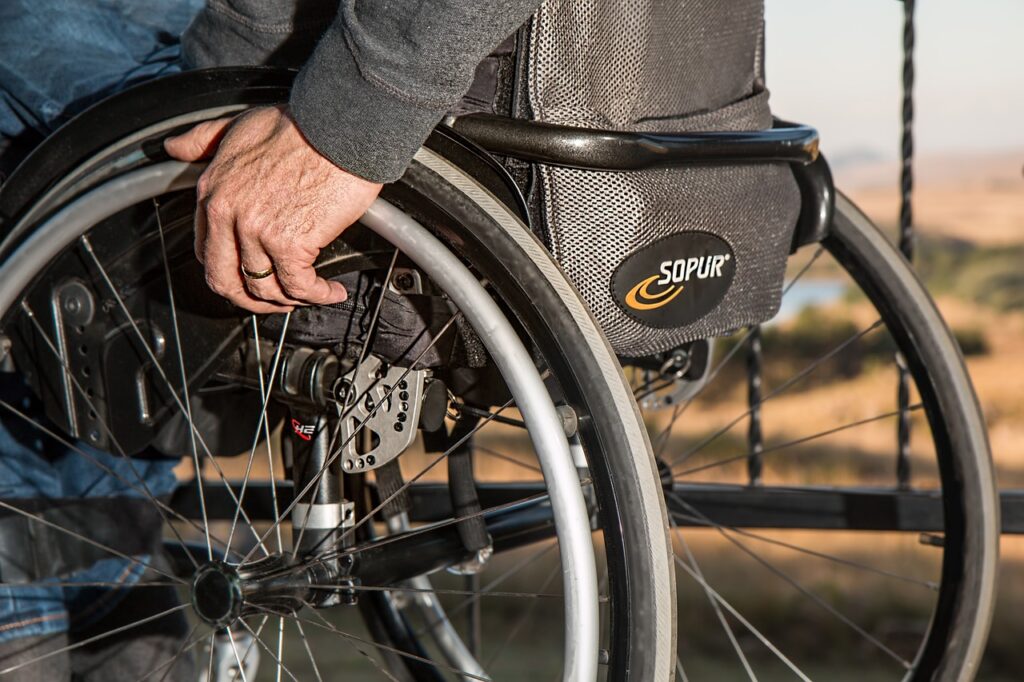Accidents can happen at any time, and their impact can often lead to long-term or permanent disabilities. Navigating the process of filing a disability claim can be complex and overwhelming, especially when you’re dealing with physical or emotional recovery. Understanding your rights and the steps involved is crucial to ensuring you receive the benefits you deserve. This article breaks down essential information on disability claims after an accident, providing clarity on the process and your options.
1. Types of Disability Claims
After an accident, different types of disability claims may apply depending on the severity and duration of your condition:
- Short-Term Disability (STD): These benefits typically cover temporary injuries or illnesses that prevent you from working for a short period, often up to six months.
- Long-Term Disability (LTD): LTD benefits come into play if your condition lasts longer than the short-term period, often extending for several years or until retirement age.
- Social Security Disability Insurance (SSDI): SSDI is a federal program that provides benefits to individuals who have a significant work history but are now unable to work due to a disabling condition.
- Supplemental Security Income (SSI): This is a needs-based program for individuals with limited income and resources who are disabled, regardless of work history.
2. Eligibility Criteria for Disability Claims
Each type of disability benefit has specific eligibility requirements. Common factors include:
Medical evidence is the foundation of any disability claim, requiring comprehensive documentation from licensed healthcare providers to demonstrate the severity and functional limitations of the condition. For SSDI, applicants must also establish a sufficient work history, showing that they have contributed to Social Security through payroll taxes over a specified period. On the other hand, SSI eligibility is based on financial need, meaning applicants must meet strict income and resource limitations, often requiring detailed financial records. Additionally, the expected duration of the disability plays a crucial role; most programs mandate that the condition must be projected to last at least 12 months or result in death, ensuring that benefits are directed toward long-term impairments rather than temporary setbacks.
3. The Application Process
Filing a disability claim involves several important steps, each requiring attention to detail and thorough preparation. The process begins with gathering essential documentation, including comprehensive medical records that outline the diagnosis, treatment, and prognosis of your condition, as well as accident reports and employment history that demonstrate the impact on your ability to work. Once your paperwork is in order, the next step is completing the application, where accuracy and completeness are crucial—any missing or incorrect information can lead to delays or denials. After submitting your claim to the appropriate agency or insurance provider, it’s vital to monitor its status regularly and remain responsive to any requests for additional information or clarifications. Timely follow-up can make a significant difference in expediting the decision-making process and ensuring that your application receives the attention it deserves.
4. Common Challenges and How to Overcome Them
Many disability claims face initial denials due to insufficient evidence or technical errors, but there are strategic ways to improve your chances of approval. Engaging an experienced disability attorney can make a significant difference, as they understand the complexities of the claims process and can help you build a compelling case with well-organized and persuasive documentation. It’s also crucial to meticulously double-check all your paperwork, ensuring that medical records, employment history, and supporting evidence are complete, up-to-date, and clearly demonstrate the extent of your disability and its impact on your ability to work. In the event of a denial, responding swiftly and thoroughly to initiate the appeals process is essential; meeting deadlines and providing additional evidence or clarifications can often turn a rejected claim into an approved one. Staying proactive and detail-oriented throughout the process increases your likelihood of a successful outcome.
5. Understanding the Appeals Process
If your claim is denied, you have the right to appeal. The appeals process typically includes:
- Request for Reconsideration: A fresh review of your case by a new evaluator.
- Hearing Before an Administrative Law Judge: Presenting your case in a formal setting with the opportunity to provide additional evidence.
- Appeals Council Review: If the judge’s decision is unfavorable, you can request a higher-level review.
- Federal Court Review: As a last resort, you can take your case to federal court.
6. Resources and Support
Navigating disability claims can be challenging, but numerous resources are available:
- Legal Aid: Nonprofit organizations often provide free or low-cost legal assistance.
- Support Groups: Connecting with others facing similar challenges can provide emotional support and practical advice.
- Government Agencies: Websites like the Social Security Administration (ssa.gov) offer detailed information and guidance.
Conclusion
Filing a disability claim after an accident requires patience, organization, and perseverance. Understanding your rights, gathering strong evidence, and seeking professional assistance can significantly improve your chances of receiving the benefits you deserve. Whether you’re applying for short-term, long-term, or federal disability benefits, staying informed and proactive is key to navigating this often complex process.
References:
- Social Security Administration: https://www.ssa.gov
- National Disability Rights Network: https://www.ndrn.org
- Disability Benefits Help: https://www.disability-benefits-help.org
